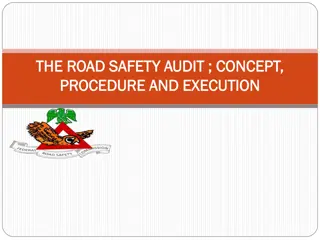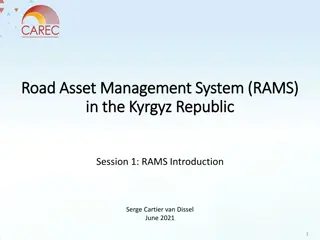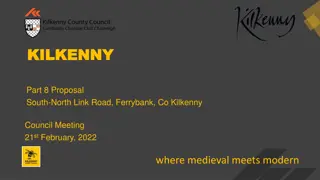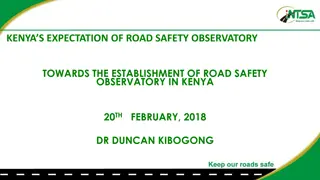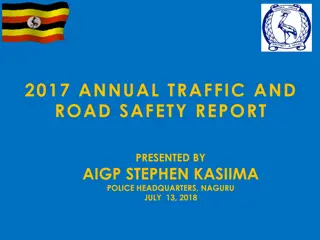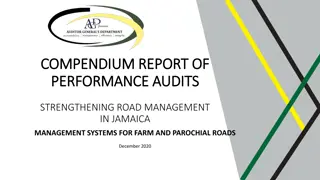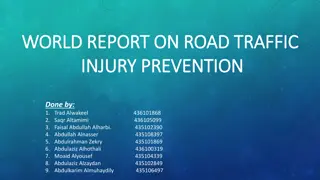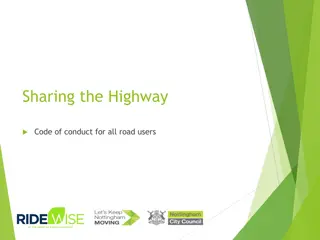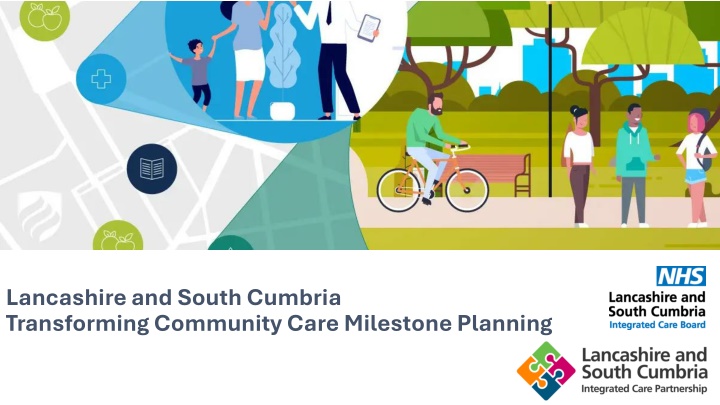
Lancashire and South Cumbria Community Care Transformation Milestones Planning
Lancashire and South Cumbria are embarking on a journey to transform community care with a vision to provide high-quality, community-centered health and care by 2035. They aim to keep people safe and well at home, closer to where they live. The milestone planning outlines the strategic phases and activities for achieving this vision, including integrated neighborhood teams, enhanced community care, and creating healthier communities.
Download Presentation

Please find below an Image/Link to download the presentation.
The content on the website is provided AS IS for your information and personal use only. It may not be sold, licensed, or shared on other websites without obtaining consent from the author. If you encounter any issues during the download, it is possible that the publisher has removed the file from their server.
You are allowed to download the files provided on this website for personal or commercial use, subject to the condition that they are used lawfully. All files are the property of their respective owners.
The content on the website is provided AS IS for your information and personal use only. It may not be sold, licensed, or shared on other websites without obtaining consent from the author.
E N D
Presentation Transcript
Lancashire and South Cumbria Transforming Community Care Milestone Planning
TCC Vision To achieve our vision of having a high quality, community-centred health and care system by 2035, the ICB is undertaking an extensive programme of work to transform community care. The ambition is to keep people safe and well at home, by bringing care closer to where they live and treating more people outside of a hospital setting where possible. Over the coming months, we will produce a 2 10-year transforming community care strategy which is led by clinicians and co- produced with people living in Lancashire and South Cumbria.
Milestones Where we are now 3
Milestones Phase 1 High level June 2024 18 months The original Phase 1 plan launched July 2024 and was set to run for 24 months. The Senior Programme managers are now in post and will bring forward the completion of phase 1 by 6 months, therefore to complete phase 1 by end July 2025, and launch phase 2 August 2025. Activity Integrated Neighbourhood Teams Enhanced Care in the Community Creating Healthier Communities Transforming Community Care Risks Baselining End of January 2025 Heatmap/priority areas identified End of February 2025 End of April 2025 End of April 2025 Current community services outcomes, cost and gaps Kingsgate Reviewing Pathway provision End of February 2025 End of March 2025 End of May 2025 End of May 2025 Visioning Session 10th February 2025, Draft mid February, End of March 2025 sign off Development of the TCC strategy Approval pathways need to be understood Operational Metrics End of February 2025 End of March 2025 End of April 2025 End of April 2025 Dependent on the Business Intelligence Team Gap Analysis Matrix End pf April 2025 End of May 2025 End of July 2025 End of July Kingsgate Technology Enablement Shared Care record January March 2025 Draft scope each areas for 2025/26 January March 2025 Baselining exercise, what do we have now, WGLL February March 2025 Planning requirement, commissioning intentions, collaborative work programmes Large scale communication & engagement plan at pace needed 20th January detailed action plan for Q1 and Q2 2025/26 Finalise February 2025 Deployment April 2025 Communication, Marketing & Engagement Strategy Little to no communication currently in circulation 4
Milestones Phase 2 High level for development The original Phase 2 plan 3-5 years 3-5 years (2026/27 to 20230/31) included the implementation of the strategy and delivery plans Activity Integrated Neighbourhood Teams Enhanced Care in the Community Creating Healthier Communities Transforming Community Care Risks Implementation Strategy Granular Level Detail plans at Place Granular Level Detail plans at System Level Test Areas identified Technology Enablement Shared Care record Communication, Marketing & Engagement Strategy Measurement System inc. population health 5
Transforming Community Care Plan on a Page Programme Core Objective Focus on the medium to longer term clinically led transformation of community services that is co-produced with LSC residents with a 2 10-year strategy and delivery roadmap leading up to the new hospitals being in operation in 2035 National Health and Care Triple Aims Better Health and Wellbeing for Everyone Sustainable Use of NHS Resources Better Care for All Programme Leadership Statutory Duty to Reduce Health Inequalities Executive SRO Sarah O Brien Delivery of the NHS Long Term Plan 2019 - 2029 Strategy Joint Strategic Needs Assessment Improve Quality, Safety, Clinical Outcomes and Patient Experience Equalise Opportunities and Clinical Outcomes Across the Area Meet National and Locally Determined Performance Standards and Targets Portfolio Director - Tony McDonald ICB Core Objectives Core20Plus5 National Healthcare Inequalities Improvement Programme Make working in LSC an Attractive and Desirable Option for Existing and Potential Employees To Develop and Implement Ambitious Deliverable Strategies Meet Financial Targets and Deliver Improved Productivity Public Health Atlas of Variation End to end pathways - Supporting people to recover and increase independence through time limited enhanced support based on the person s needs to enable them to remain at home or as close to home as possible, utilising technology enabled care. Brings together care teams to deliver recovery, rehab, reablement, crisis services, end of life care, mental health and learning disabilities home-based and bed- based support Enhanced Care in the Community Anchor streams of work that connect / rely on delivery elsewhere in the system EOL (ICB) Vital and Vulnerable Services (ICB) Care Sector (LA) Virtual Care (ICB) Workstreams Holistic approach to health and wellbeing - Connecting residents to each other and services available from local partners and local groups, activities and events through technology and other means. Providing a forum for ideas to emerge from the community. Encouraging residents to take control of their health & wellbeing through self care, prevention, healthy lifestyle choices and behaviours adopting learning from the Healthier Fleetwood model and Whyndyke Farm Healthy New Town Creating Healthy Communities End to end pathways - Bringing together teams and professionals to improve care for neighbourhood populations. Primary, community, secondary and social care, mental health and learning disabilities, end of life, domiciliary and care staff and VCSE partners. A team of teams, utilising technology to deliver virtual care, sharing information and resources to improve health and wellbeing and tackle health inequalities through streamlined pathways and navigation Integrated Neighbourhood Teams Acute UEC Configuration Interdependencies We will manage interdependencies through matrix working across portfolios and ICB directorates to embed mechanisms and enable interdependencies to be proactively and relentlessly managed to drive delivery of the collective transformation agenda Delivery Phases NHP Diagnostics PHM Primary Care MH and LD Regulated Care Delivered through matrix working across functions, sectors, portfolios with residents at the centre
Programme Governance Oversight & Advisory Group Transforming Community Care Board PCB Board VCFSE Reference Group Clinical Reference Group Creating Healthy Communities Integrated Neighbourhoods Palliative End of Life Care Enhanced Community Care Virtual & Vulnerable Community Services Virtual Care Care Sector System and/or Place Delivered Place Delivered Local Authority Digital/Technology Enablement/Bi-Operational Metrics Estates Communication, Engagement & Marketing Workforce 7
Leadership Provider: Each provider will lead elements and will embed a relentless but realistic focus on delivery at pace to maximise achieving benefits year on year ICB: System leadership SRO Sarah O Brien, Portfolio Director Tony McDonald, Clinical Leadership Stephen Sandford Chief AHP The programme leadership for TCC, is delivered through matrix working by Senior Programme Leads: Sarah McCrossan, Brooke Banbury & Sinead Foster Provider (Services) ICB (Commissioner) Place: Place Integration Leads across all 4 places (Blackpool, BwD, Lancashire and South Cumbria) are supported by the ICB to deliver local plans and initiatives and longer-term transformation programmes. Clinical and Care professional leads and place operational teams Place (Delivery)
Lancashire and South Cumbria Integrated Neighbourhoods Milestone Planning Sarah McCrossan
Each INT works through the four phases with support from system, place and borough-based partnerships, recognising that progress between the phases is not linear Phase 2: Population Health Management (PHM) with supporting infrastructure Phase 4: Full delegation for neighbourhood delivery of the LSC core 5 principles Phase 1: Foundations and integrated practice Phase 3: Integrated and intelligence led practice PHM est. and embedded: deep understanding of community through data and community connections driving preventative approach INTs are defined around a geography, generalist team aligned, and leadership established Joint workforce planning and workflow allocation in the neighbourhood established Shared Governance (clinical and financial) established Full delegation of neighbourhood resources into a shared budget enabling integrated funding streams that deliver the LSC core principles Processes for integrated practice are established and enacted across PC, Community, MH and VCS services Interoperable IT systems are in place enabling joint care planning (shared care record) and risk management Co-located, integrated services in place with consultant in-reach model confirmed Estate plan for the INT agreed, with a focus on single hubs established where possible and true integration of teams within The population is understood with a sense of working in a team serving that population Integrated care pathways in place and models of delivery designed to meet the needs of the neighbourhoods Accountability for delivery established to the ICB Executive PHM fully established, full digital health interoperability and estate solutions confirmed INT jointly plans its workforce to deliver integrated care models INT delivering demonstratable system benefits and outcomes Functioning INTs in Place 10
The minimum timescales for completing phases are set out on the roadmap (TBC) with the high impact outputs and anticipated benefits. We acknowledge some PLACES have a mature model where some are currently in the early stages of development Phase 2: Population Health Management (PHM) with supporting infrastructure Phase 4: Full delegation for neighbourhood delivery of the LSC core 5 principles Phase 1: Foundations and integrated practice Phase 3: Integrated and intelligence led practice PHM fully established, full digital health interoperability and estate solutions confirmed INT jointly plans its workforce to deliver integrated care models INT delivering demonstratable system benefits and outcomes Functioning INTs in Place Targeting achievement by October 2025 Targeting achievement by March 2026 Targeting achievement by March 2029 Targeting achievement by March 2027 Outcomes: Reduction in A&E Attendances for High Intensity Users Reduction in emergency admissions to hospital for Ambulatory Care conditions Reduction in admissions to permanent residential are care home beds Reduction in spot purchasing of CHC Indicators of achievement: Processes are in place for measuring and reporting on improvements patient/citizen care through a more coordinated approach Shared Care Record (CLG or Delivery Units?) Processes are in place to measure improvements in staff wellbeing and Case Management numbers Outcomes: Improvements in recorded prevalence ATTACHED TO THE LES/DES measures Improvement in Reduction in emergency admissions for >65s Reduction in LoS >65s De-Escalation of A&E pathways Outcomes: Improvement in key public health measures Stable housing and employment for people with SMI alongside the proactive provision of health checks Improvement against citizen and staff experience measures 11
Neighbourhood Overview For Development Lancashire & South Cumbria Lancashire Place (19 INTS) South Cumbria (9 INTS/ICCS) Blackburn with Darwen Place (4 INTS) Blackpool (11 INTS) Barrow & Millom Bay PCN Blackpool North Pendle West Blackpool South Greater Preston Burnley West Grange & Lakes Blackburn East Blackburn West Blackburn North Fleetwood Blackpool Central West Carnforth & Milnthorp e Blackpool South Central Blackpool Central Pendle East Hyndburn Rural Hyndburn Central Darwen Kendal Lancaster Rossendale East Rossendale West Lytham St Annes & Ansdell Western Dales Northern Parishes Mid Furness Blackpool North Ribblesdale Torebtum Preston North & East Burnley East Wyre Rural Extended Wyre Integrated Network Skelmersdale Chorley Central Chorley Together Leyland Chorley & South Ribble Bridgedale & South Ribble Ormskirk Preston & South Ribble 12
A Team of Teams What makes up the L&SC INT: General Practice Community Pharmacy Community Dental Community Eye Care Community Services Children & Adults Physical and Mental Health Services Community Consultants/Specialists Secondary Care Consultant In reach Social Care Social Prescribers Community Wellbeing Practitioners Priority care models/pathways for delivery e.g. enhanced health in care homes linked to LES & DES ADD INFOGRAPIC 13
For discussion at CLG 1. Reaffirm commitment to the direction to deliver a single vision? 2. Agree INT framework and mandate to proceed? ICB Architecture 3. How can we empower organisational leaders to accelerate integrated delivery at Neighbourhood level? 4. Are we committed to moving from integrated roles to integrated teams? 5. Develop consistent and embedded process e.g. agreement on care co- ordination? 6. How do measure progress against the INT (measures in development) 7. Framework? SMC 8. Design Group Think Tank 9. Delivery Group Do Tank architecture, accountability line 10.Opportunity for OD Organisational Development 11.How do we propel into Transformation Mode 14
Lancashire & South Cumbria Integrated Care Our expectation is that all providers, working in collaboration, will put the development and support of Integrated Neighbourhood Teams at the heart of their strategy, creating Teams of Teams to work better together. Our places and neighbourhoods put our residents, their careers and wider communities at the centre of our integrated working. Most people's day-to-daycare and support needs elated to those services. The services should therefore not be considered in isolation and need to be considered with the overarching specification. System: Integrated working across L&SC Place: Integrated working with the areas covered by our four place-based partnerships, covering Lancashire, Blackburn with Darwen, Blackpool and South Cumbria Neighbourhoods: Integrated working in the areas covered by our 41 primary care networks, and local neighbourhood teams 15
Lancashire & South Cumbria Integrated Care INTs will provide seamless community-based care; and are accountable for their local population and the individual needs with in it: Within our organisations: staff will take a no wrong front door approach for all services, which can be access digitally, by telephony or in person. We will get people to the help and service they need. They will be geographically aligned to a population/PCN They will contain the core services of GPs & PCN staff, FCPs/ACPs, CVSFE, Public Health Intelligence, Adult Social Care, Dom Care, Children s services, Community Nursing Staff, Social Prescribing, Community Nursing, Adult Therapies, SALT, Pharmacists, Community Pharmacy. In addition, they will have a dedicated integrator function, coordinated at Place level through General Practice, Community Providers and/or Local Authorities. Areas of work towards hub arrangements wherever possible in which core services will be housed behind a single reception. There will be transparency of resources within each INT, coordinated through the Place-based Partnership and interdepend to the L&SC core offer developments. They will access connecting services for all population groups, which operate at Borough or wider footprint, in an agile and responsive way. The core teams will pull down on more specialist services at scale for specific population groups through their acute trusts and other specialist service provision 16
Lancashire & South Cumbria Integrated Care Through driving these changes LSC 2030 will have . Really effective integrated working in patient/citizen facing activities Crucially aligning the delivery of enablers that support front line teams, i.e. the Shared Care Record Data, technology and digital enablers (shared care record) A Focus on outcomes not inputs Integrated workforce planning processes Integrated estate solutions Core offers that we build on to meet needs of communities sometimes left behind Models of working across organisations, which may be secured contractually, but not necessarily 17
Core services Overview FOR DEVEMOPMENT System Level Lancashire & South Cumbria System level acute care services, e.g. major trauma, Orthopaedic Elective Centre, vascular, cancer. Post COVID services SPA, acute mental health Mental health initial response service Borough Level Services Community Based Services 2 Hour Urgent Response IHSS Hospice Care Hospital at Home Services & Virtual Wards Home First & Integrated Discharge Community Diagnostics Centres Respiratory Hubs Women's Health Hubs * Primary Care Enhanced Access/Services (Care home Ward rounds) INT Level Services District Nursing Community Rehabilitation Adult Social Care Community Mental Health Primary Care GP, Pharmacy, Dentistry, Optometry Same Day Urgent Care Services Social Prescribing Care Navigation Health Promotion Antenatal and post-natal care 18
Operational Metrics 1. Focus of the group is to determine suggestions for outcome measures which will determine the success of the TCC programme balancing assurance with the impact of transformation. 2. Initial work will be needed to shape a balanced approach to identifying appropriate measures and propose these to the TCC board for sign-off before establishing a way forward for mobilising any data/intelligence work required to mobilise these measures into an appropriate framework for reporting. 3. A key consideration is to minimise the risk of duplication and establish whether there is opportunity to cross-utilise indicators or outcomes measures within existing or developing ICB programmes. 4. After initial reflections, BI & Performance colleagues have suggested that the group consider a 3 pillar approach to shaping and grouping any outcome metrics, as detailed below. 3. Consider and scope potential measures to monitor medium-longer term significant shifts of care focus 2. Pull on outcome measures that are utilised/emerging from within Anchor streams of work + TCC Technology Enabled Steering Group initiatives 1. Data Quality in Key Datasets Key Indicators within emergent Community Reporting Strategy that are must-do s for ensuring granular/linked intelligence across Out of Hospital care. CSDS (Community Services Dataset) MHSDS MSDS Etc. 20





